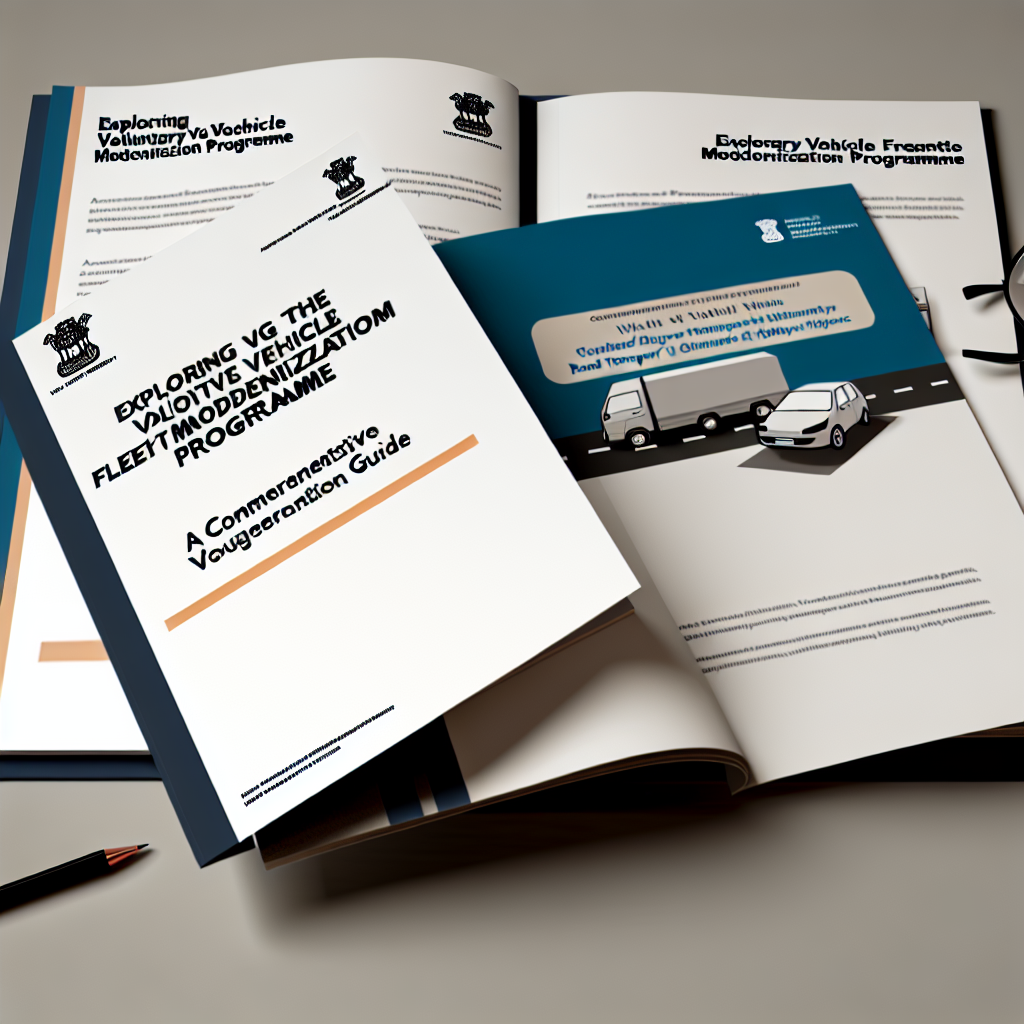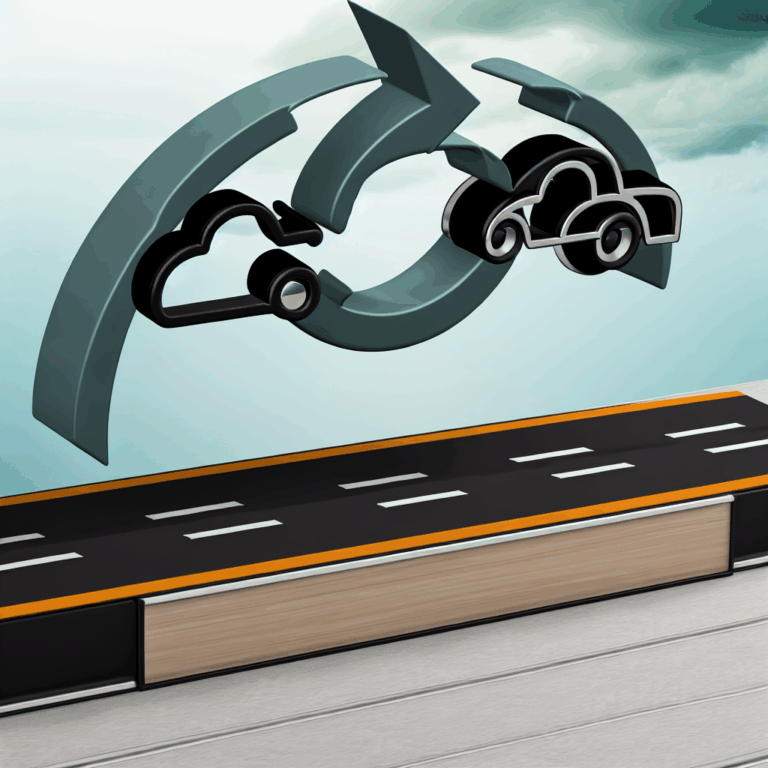Copyright @ 2023 www.digimitr.com. All rights reserved.

Exploring the Voluntary Vehicle Fleet Modernization Programme: A Comprehensive Guide by the Ministry of Road Transport & Highways (MoRTH)
Discover the important features of the government scheme titled “Exploring the Voluntary Vehicle Fleet Modernization Programme: A Comprehensive Guide by the Ministry of Road Transport & Highways (MoRTH)”. This initiative is overseen by the relevant ministry and focuses on providing benefits to eligible beneficiaries.
Here is a comprehensive overview:
Introduction
The Voluntary Vehicle Fleet Modernization Programme (VVMP) is an initiative launched by the Ministry of Road Transport and Highways (MoRTH) in India to incentivize the modernization of the vehicle fleet. As part of the government’s broader commitment to reduce pollution and enhance safety on the roads, this program aims to encourage vehicle owners to replace old and polluting vehicles with newer, environmentally friendly models. Given the substantial impact of vehicular emissions on air quality and public health, the VVMP represents a proactive step towards fostering a sustainable transportation ecosystem in India. This guide delves into the various aspects of the program, shedding light on its eligibility criteria, features, application process, funding mechanisms, achievements, challenges, and recent developments.
Eligibility Criteria
To participate in the Voluntary Vehicle Fleet Modernization Programme, vehicle owners must adhere to specific eligibility criteria set by MoRTH. The program typically targets:
-
Vehicle Age: The primary focus is on older vehicles, generally those that are more than 10 years old for personal vehicles and more than 15 years old for commercial vehicles. These vehicles are often less fuel-efficient and contribute significantly to pollution.
-
Type of Vehicle: The program covers a range of vehicle categories, including cars, two-wheelers, buses, and commercial vehicles such as trucks and goods carriers. However, certain heavy-duty vehicles may be excluded based on their utility.
-
Ownership: The vehicle must be owned and registered in the applicant’s name, and they must have valid documentation, including insurance and pollution under control (PUC) certificates.
- Compliance with Government Requirements: Vehicle owners should comply with all relevant state and national regulations concerning vehicle registration and operation.
Key Features and Benefits
The VVMP offers several key features designed to facilitate the timely modernization of vehicles while providing substantial benefits to participants.
-
Incentives: One of the most attractive features is the financial incentives provided to vehicle owners for scrapping their older vehicles. This can significantly offset the cost of purchasing a new vehicle, making the upgrade more economically viable.
-
Environmentally Friendly Alternatives: Participants are encouraged to invest in newer, fuel-efficient, and environmentally friendly vehicles, including electric and hybrid models. This aligns with India’s commitment to reducing greenhouse gas emissions.
-
Simplified Processes: The program aims to simplify the scrapping process. Vehicle owners can access a network of authorized scrapping centers that make the transition easier and faster.
-
Increase in Safety Standards: Newer vehicles often come equipped with advanced safety features and technology that enhance road safety and reduce accident rates.
- Economic Growth: By stimulating vehicle sales, the program supports the automotive sector and contributes to job creation in related industries.
Application Process
The application process for participating in the VVMP is designed to be straightforward. Vehicle owners can follow these steps to apply:
-
Online Registration: Interested participants must initially register on the official VVMP website or through designated state government portals. They will be required to submit personal details, vehicle information, and documentation.
-
Documentation Submission: Applicants must upload relevant documents, including the vehicle registration certificate (RC), insurance papers, and PUC certificate.
-
Evaluation: Once submitted, the application will be evaluated by authorized personnel. A physical inspection may be required to verify the vehicle’s eligibility.
-
Issuance of Scrappage Certificate: Upon successful evaluation, vehicle owners will receive a scrappage certificate. This certificate is crucial as it authorizes the vehicle’s disposal and qualifies the owner for the financial incentives.
- Purchase of New Vehicle: With the scrappage certificate in hand, participants can proceed to purchase their new vehicles from authorized dealers, availing the government subsidies.
Funding and Budget
The funding for the Voluntary Vehicle Fleet Modernization Programme is a shared responsibility between the central government and state governments. The budget allocation can vary from year to year depending on government revenue and priorities.
-
Government Support: The central government has earmarked a specific budget to provide incentives for the scrapping of old vehicles, which is a key component of the program.
-
State Contributions: Many state governments also allocate funds to bolster the program, and may offer additional incentives to promote local manufacturing of new vehicles.
- Private Sector Involvement: Some manufacturers are partnering with MoRTH to create promotional offers on new vehicles, benefitting participants further.
Achievements or Impact
Since the inception of the Voluntary Vehicle Fleet Modernization Programme, numerous impacts have been noted:
-
Reduction in Pollution Emissions: Preliminary data suggests that the program has contributed to a noticeable decrease in vehicular emissions, leading to improved air quality in several urban areas.
-
Enhanced Vehicle Safety: As old vehicles are replaced, the overall safety standards on roads have improved, reflected in decreasing accident rates.
-
Economic Upsurge: The automotive sector has seen a boost in sales, positively affecting the economy and generating employment opportunities.
- Increased Awareness: The program has raised public awareness about the importance of vehicle maintenance and environmental responsibility.
Challenges (if any)
While the VVMP has made significant strides, it has faced challenges that need addressing:
-
Public Awareness: Many vehicle owners remain unaware of the program. Campaigns to educate the masses are crucial to increasing participation.
-
Bureaucratic Hurdles: Complaints of red tape and delays in the registration process have surfaced, necessitating administrative improvements.
- Resistance to Change: Some vehicle owners are hesitant to abandon their older vehicles due to sentimental value or perceived costs, requiring effective communication strategies to highlight the benefits of modernization.
Recent Updates
In light of its ongoing commitment to improving the VVMP, MoRTH has made several recent updates. These include expanding the network of authorized scrapping centers, introducing more attractive financial incentives, and launching awareness campaigns targeting rural areas. Furthermore, measures are being taken to streamline the application process, including enhanced digital platforms to facilitate easier access for participants.
Conclusion
The Voluntary Vehicle Fleet Modernization Programme initiated by the Ministry of Road Transport and Highways represents a critical move towards promoting an environmentally sustainable future. By incentivizing the scrapping of older vehicles and facilitating the purchase of modern, fuel-efficient alternatives, the program not only seeks to improve air quality but also supports economic growth and road safety. As challenges persist, ongoing communication and awareness are vital to ensuring the program’s success.
FAQ
1. How can I check if my vehicle is eligible for the VVMP?
To check your vehicle’s eligibility, you should review its age, registration status, and ensure compliance with environmental regulations. You can also visit the official VVMP website or contact your local transport office for specific guidelines.
2. What happens to my old vehicle after scrapping?
Once your old vehicle is scrapped, it is dismantled following regulated procedures. The scrappage center will issue a scrappage certificate, which is essential for claiming financial incentives.
3. Are there any additional costs associated with participating in the VVMP?
While there might be minor administrative fees associated with vehicle evaluation and scrapping, the financial incentives provided under the program generally cover the costs associated with purchasing a new vehicle, making it economically beneficial for participants.
For more information, check out official government site,
Official government website or relevant source not provided.
Stay updated on related schemes and initiatives using hashtags: #Exploring #Voluntary #Vehicle #Fleet #Modernization #Programme #Comprehensive #Guide #Ministry #Road #Transport #Highways #MoRTH
Feel free to share about this scheme in the comments below!





